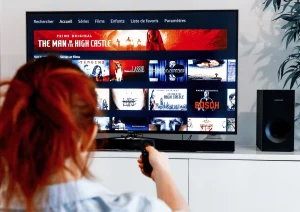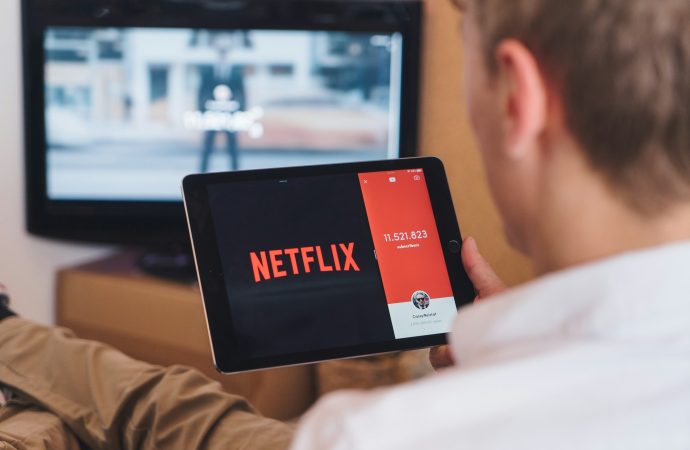Introduction The film industry has been undergoing a seismic shift over the past decade, primarily driven by the advent of streaming services. The traditional film release model, which relied heavily on theatrical releases and physical media, has been disrupted by the rise of digital platforms like Netflix, Amazon Prime, Disney+, and others. This article aims
Introduction
The film industry has been undergoing a seismic shift over the past decade, primarily driven by the advent of streaming services. The traditional film release model, which relied heavily on theatrical releases and physical media, has been disrupted by the rise of digital platforms like Netflix, Amazon Prime, Disney+, and others. This article aims to explore how streaming has changed the film release model, examining its impact on various stakeholders, including filmmakers, studios, theaters, and audiences.
The Traditional Film Release Model

Image by: Google.com
Historically, the film release model followed a well-defined path. Films would debut in theaters, where they would remain for a period ranging from a few weeks to several months, depending on their box office performance. This theatrical window was crucial for generating significant revenue. After the theatrical run, films would be released on physical media, such as DVDs and Blu-rays, followed by pay-per-view and eventually, television broadcasts.
This model allowed studios to maximize revenue by staggering the release across different platforms, each with its own revenue stream. Theaters, in turn, relied heavily on new releases to draw audiences, while physical media sales provided a steady income for both studios and retailers.
The Rise of Streaming Services

Image by: Google.com
The emergence of streaming services has radically altered this landscape. Companies like Netflix, Amazon Prime, and Disney+ offer vast libraries of content accessible anytime, anywhere, for a monthly subscription fee. This convenience has made streaming incredibly popular, leading to a decline in physical media sales and changing audience expectations.
Impact on Theatrical Releases
One of the most significant changes brought about by streaming is the shortening or even elimination of the theatrical window. Some films now debut simultaneously in theaters and on streaming platforms, a practice known as “day-and-date” release. This approach has been accelerated by the COVID-19 pandemic, which forced many theaters to close temporarily.
While some argue that this model cannibalizes box office revenue, others believe it can expand a film’s reach, especially for niche or independent films that might struggle to secure widespread theatrical distribution. Major studios are experimenting with different strategies, such as exclusive streaming releases or limited theatrical runs followed by a quick transition to digital platforms.
Impact on Independent Filmmakers

Image by: Google.com
For independent filmmakers, streaming services offer both opportunities and challenges. On the one hand, digital platforms provide a global audience and lower distribution costs, making it easier for indie films to find viewers. On the other hand, the sheer volume of content available on streaming services can make it difficult for smaller films to stand out.
Some streaming platforms, like Netflix and Amazon Prime, have started investing in original content, providing funding and distribution for independent projects. This has led to a surge in high-quality indie films and documentaries that might not have been made under the traditional film release model.
Impact on Studios
For major studios, streaming has become an essential part of their distribution strategy. Companies like Disney have launched their own streaming services, such as Disney+, to retain control over their content and create new revenue streams. This vertical integration allows studios to bypass traditional distribution channels and connect directly with consumers.
However, this shift also requires significant investment in technology and content creation. Studios must balance the need to produce blockbuster films that can draw subscribers with the financial realities of running a streaming service. This has led to a more data-driven approach to content creation, with studios using viewer analytics to inform their decisions.
Impact on Theaters
Theaters have been among the hardest hit by the rise of streaming. The convenience and affordability of digital platforms have led to a decline in theater attendance, particularly for smaller films. To compete, theaters are focusing on creating unique experiences that can’t be replicated at home, such as IMAX screenings, luxury seating, and enhanced food and beverage options.
Some theaters are also partnering with streaming services to host exclusive premieres or limited-time screenings of popular digital content. This hybrid approach aims to draw audiences back to theaters while acknowledging the growing influence of streaming.
Impact on Audiences

Image by: Google.com
For audiences, the shift to streaming has brought unprecedented convenience and choice. Viewers can access a vast array of films from the comfort of their homes, often at a lower cost than going to the theater. This has democratized access to content, allowing more people to enjoy films that might not have been available in their local theaters.
However, this abundance of choice can also be overwhelming. With so many options, viewers may struggle to decide what to watch, leading to “decision fatigue.” Streaming services are addressing this issue by using algorithms to recommend content based on viewing history, but this approach has its own limitations and biases.
Conclusion
The rise of streaming has fundamentally changed the film release model, impacting every aspect of the industry. While it has brought challenges, it has also created new opportunities for filmmakers, studios, theaters, and audiences. As the industry continues to evolve, the key will be finding a balance between traditional and digital distribution methods, ensuring that films can reach the widest possible audience while maintaining their artistic and commercial integrity.
This transformation is far from over, and the film industry will need to continue adapting to the changing landscape. Whether through innovative release strategies, new business models, or technological advancements, the future of film distribution promises to be as dynamic and exciting as the films themselves.
















